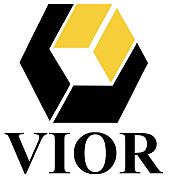 One World Lithium – Critical Fluid Separation Technology
One World Lithium – Critical Fluid Separation Technology
One World Lithium
Critical Fluid Separation Technology
June 4, 2021
The Critical Fluid Separation Technology
One World Lithium critical fluid separation technology, subject to proof-of-concept testing, will separate various elements including lithium carbonate, potassium (potash), boron, and magnesium from brine. It will also separate out rare earth and heavy rare earth elements. The process involves heating the brine to various temperatures as well as different pressures to separate elements as required.
2021 Targets
- In 2021, OWL intends to have an aggressive year and achieve three important milestones in the development of its Critical Fluid Separation Technology.
- Initially to complete its proof-of-concept testing. If successful to then file applicable patents.
- To research and complete an initial marketing plan to sell license agreements to current and future lithium- brine producers.
- And to contract with BC Research to complete design and engineering plans to build a pilot plant before the end of the year.
Ownership
If the proof of concept is successful, then one or more patents will be filed. OWL has the exclusive right to purchase 100% of the technology from Expansion Power Ltd and West Peak Ventures of Canada that will be subject to a 2% royalty payable to Expansion Power.
Probable Benefits
- There will be no requirement for either a mill or an evaporation pond. If one uses Lithium America’s Charchari Olaroz deposit bankable feasibility study, the Capex savings may be $400 million USD and the OPEX savings would be $500 USD per metric ton of lithium carbonate (LCE).
- The chemistry of each lithium-brine salar are different which would require changes to a pilot and operating plant. A pilot plant is estimated to cost $4,000,000 USD and a production plant less than $30,000,000 USD.
- The other economic benefit may be for what is now an uneconomic deposit profitable.
- When the waste brine is returned to the same brine or aquifer it will stabilize the immediate formations and extend the mines life.
- To precipitate lithium carbonate from an evaporation pond normally takes 12 to 30 months. To produce an equivalent amount of LCE will only take two months.
- The yield for lithium carbonate is 50% at an evaporation pond, while the corresponding yield may be over 90%.
Environmental Benefits
- The technology has a nominal carbon foot print. As well, by stabilizing formations this reduces the environmental instability.
- There will also be nominal use of fresh water which remains a critical issue at most salars including the Salar de Atacama.
Forward-looking information:
This document may include forward looking information within the meaning of Canadian Securities Legislation. Forward looking information is based on certain key expectations and assumptions made by the management of the OWL, including the intention of OWL to proceed with the advancement of the property. Although OWL believes that the expectations and assumptions on which such forward looking information is based are reasonable, undue reliance should not be placed on the forward-looking information because OWL can give no assurance that they will prove to be correct. Forward looking statements contained in this document are made as of the date of this document. OWL disclaims any intent or obligation to update publicly any forward-looking information, whether as a result of new information, future events or results or otherwise, other than as required by applicable securities laws. There can be no assurance that such statements will prove to be accurate and actual results and future events could differ materially from the those anticipated in such statements, important factors that could cause actual results to differ materially from the Company’s expectations include: (i) inability of OWL to execute its business plan and raise the required financing (ii) accuracy of mineral or resource exploration activity (iii) continued access to mineral property (iv) risks and market fluctuations common to the mining industry and lithium sector in particular and (v) advancement in new technologies such as critical fluid technologies . The reader is cautioned that assumptions used in the preparation of any forward-looking information may prove to be incorrect. Events or circumstances may cause actual results to differ materially from those predicted, as a result of numerous known and unknown risks, uncertainties, and other factors, some of which are beyond the control of the OWL. The reader is cautioned not to place undue reliance on any forward-looking information contained in this document.
Neither the Canadian Securities Exchange nor its Market Regulator (as that term is defined in the policies of the Canadian Securities Exchange) accepts responsibility for the adequacy or accuracy of this document.






















